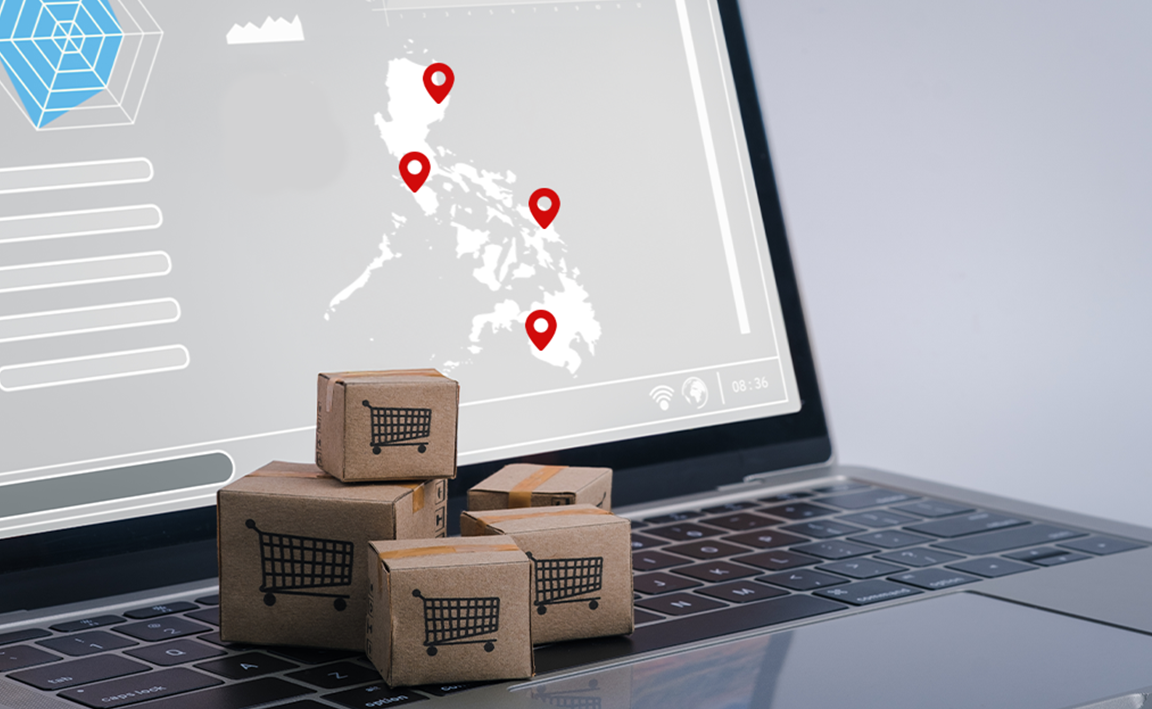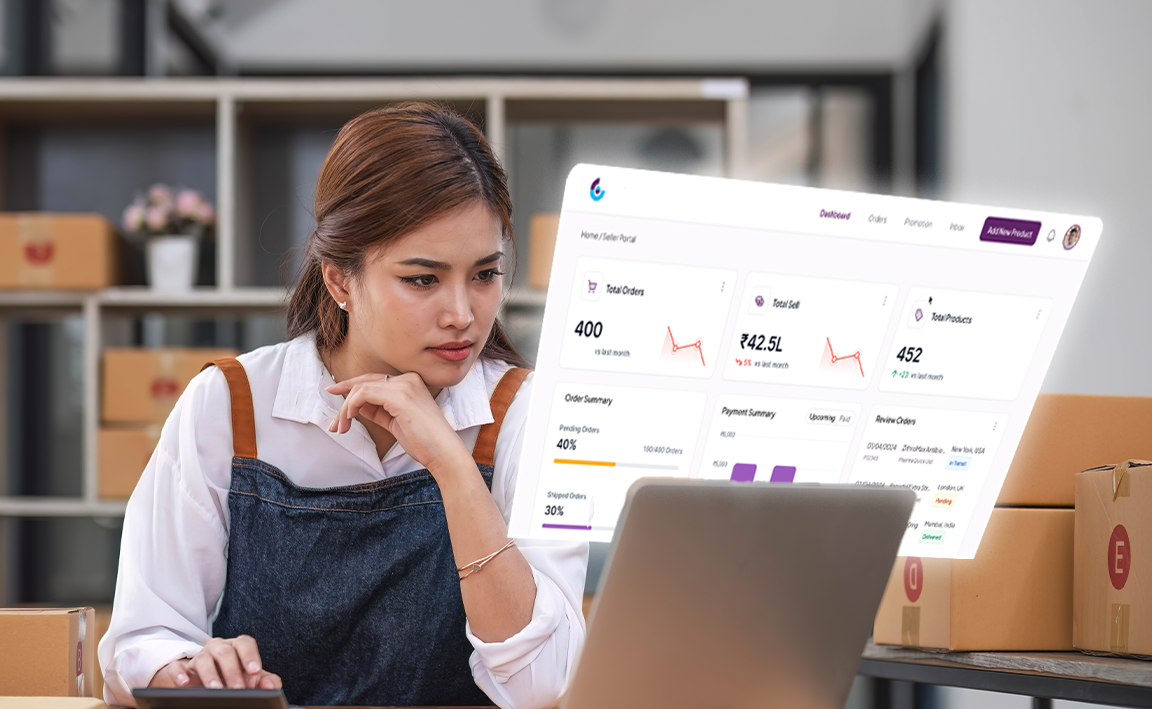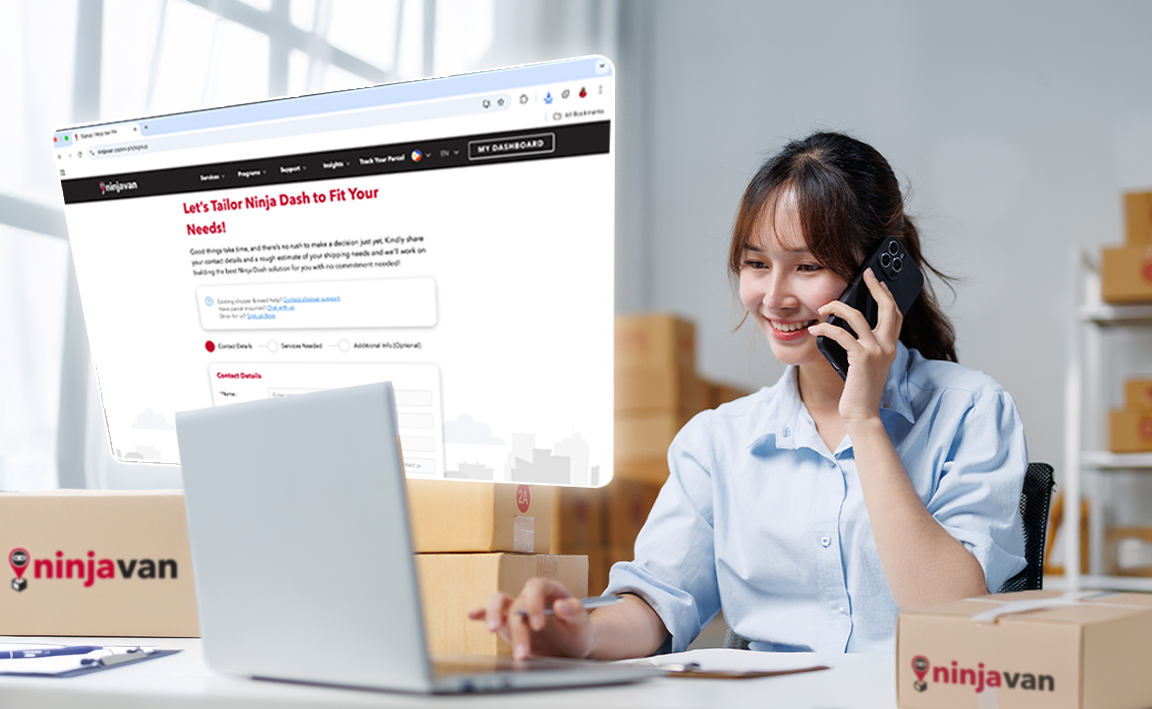How to Scale Your E-Commerce Business in the Philippines: A Growth Blueprint for 2025

The Philippine e-commerce boom is no longer about starting up but about scaling up. With revenue expected to reach $16.75 billion (₱971.5 billion) in 2025 and $24.57 billion (₱1.425 trillion) by 2029, the market is poised for significant expansion.
As digital adoption rises, regional expansion grows, and competition intensifies, 2025 becomes a turning point for brands aiming to thrive, not just survive.
This guide provides a clear, strategic, and logistics-focused roadmap to scale your e-commerce business—from fulfillment and customer support to inventory expansion and digital growth strategies.
What Does “Scaling” Really Mean in E-commerce?
Scaling your e-commerce business means selling more while keeping expenses under control. Ideally, your revenue outpaces your operating costs.
In contrast, growth often means rising revenue and rising expenses at the same pace. Scaling focuses on efficiency and profitability—building systems that enable you to handle higher volumes of orders, serve more customers, and expand without overextending your team or budget.
For Philippine sellers, signs that you’re scaling successfully include:
- Fast nationwide delivery lead times
- Higher inventory turnover ratios
- Strong repeat-purchase rates
- Accurate, reliable order fulfillment
Once your marketing efforts gain traction and orders start coming in, logistics often becomes the number one bottleneck. Without streamlined fulfillment, delays accumulate, costs escalate, and customer satisfaction suffers.
That’s why logistics is the backbone of sustainable e-commerce scale. Scaling your logistics operations enables your business to grow fast and stay profitable.
The Six-Step E-commerce Scaling Blueprint

Scaling your e-commerce business in the Philippines requires a strategic approach that optimizes every part of your operations. By focusing on these six key areas, you’ll build a resilient, efficient, and tech-enabled framework capable of handling growth and expanding your reach nationwide.
1. Fortify your tech stack and channels
Your technology infrastructure is the engine behind scalable growth. Begin by establishing a unified storefront, such as a platform like Shopify or Magento, and integrating it seamlessly with an enterprise resource planning (ERP) system. This integration provides a single source of truth across inventory levels, sales, and customer data.
Then, implement robust API integrations with major online marketplaces to ensure real-time synchronization of orders, stock levels, and buyer information across all channels. This way, you can minimize errors, prevent stockouts, and streamline your fulfillment process.
Set up automated order routing, which directs incoming orders to the most efficient fulfillment location based on product availability and customer proximity for faster processing.
Leverage real-time tracking dashboards for end-to-end visibility into every shipment. This transparency enables you to identify and solve issues fast, boosting both performance and customer satisfaction.
With Ninja Van, you get comprehensive tracking tools that allow you and your customers to monitor deliveries at every stage—building trust while easing the load on your support system.
2. Master demand forecasting and inventory buffering
Effective inventory management is vital to scaling without incurring excessive costs or stockouts. To achieve this, use historical sales data, seasonal trends, and promotional events to guide demand planning. Ideally, you incorporate a safety stock buffer to guard against unexpected demand spikes or supply chain disruptions.
Use ABC analysis to categorize your inventory based on value and sales volume, allowing you to prioritize your most critical products. Coordinate inbound schedules with your suppliers to maintain a steady flow of goods while minimizing storage costs.
When you partner with a tech-powered fulfillment provider, you can synchronize SKUs across multiple warehouse locations to optimize inventory placement and bring products close to customers, regardless of their location in the Philippines.
Ninja Fulfillment’s warehouse network and SKU syncing capabilities also reduce lead times and help you meet demand spikes more effectively.
3. Upgrade fulfillment and last-mile logistics
The efficiency of your fulfillment and last-mile delivery directly impacts customer satisfaction and your ability to scale. So, evaluate whether a nationwide hub-and-spoke logistics model is more beneficial than managing in-house shipping operations.
Ninja Van offers scalable pick, pack, and ship solutions that adapt to your evolving order volumes for timely and accurate fulfillment even during peak periods. You also benefit from a dedicated account manager who understands your unique business needs and provides valuable support by streamlining communication and problem-solving.
Ninja Van also offers parcel liability coverage, protecting your shipments against loss or damage and providing peace of mind. Our unmatched reach ensures that your products are available to customers in Metro Manila and distant provinces, with speed and reliability you can count on.
4. Streamline cashflow and payment options
Efficient cash flow is vital for sustained growth. As such, it’s best to offer a diverse range of payment options catered to the preferences of Filipino consumers, including cash-on-delivery (COD), popular e-wallets, and buy now, pay later (BNPL) services. Having multiple payment methods expands your customer base and improves conversion rates.
To expedite access to funds, leverage automated remittance reporting from your logistics partner. This provides clear and timely breakdowns of collected payments, allowing you to access your sales proceeds faster and maintain a healthy cash flow.
You must also actively work to mitigate return-to-sender (RTS) risk through clear communication with customers, accurate address verification, and efficient delivery procedures. Reducing RTS rates is good for your bottom line, as it minimizes lost revenue and unnecessary logistics costs.
5. Expand beyond Metro Manila
To truly scale, you must move products nationwide. Strategically staging inventory in key locations beyond Metro Manila, particularly in regional hubs within GMA that serve Visayas and Mindanao lanes, significantly reduces delivery times and shipping costs for customers outside the metro.
This decentralized model brings inventory closer to demand centers, accelerating fulfillment and reducing failed delivery attempts.
Another best practice is consolidating “bulky parcel delivery” on scheduled shipping days to optimize costs for larger items. For high-value or time-sensitive products, leverage a logistics partner’s priority handling and secure transit services.
6. Obsess over CX and retention
An exceptional customer experience (CX) is your strongest asset for retention and long-term growth. In line with these goals, implement proactive communication strategies, such as automated SMS or Viber updates, to inform customers about their order status, from dispatch to delivery. Transparency builds trust and reduces the volume of customer service inquiries.
Likewise, a smooth return experience can transform a potentially harmful situation into an opportunity to foster loyalty. Then, turn CX data into action by using fulfillment insights to personalize offers, trigger loyalty rewards, or follow up on delayed orders.
Common Pitfalls When Scaling an E-commerce Store

It’s normal to encounter pitfalls that can hinder growth and erode profitability, but recognizing these traps and implementing proactive solutions is crucial for sustained success.
Ignoring unit economics
A significant pitfall is expanding without a clear understanding of your unit economics—the cost and revenue associated with each product sold. If your cost per acquisition or cost to deliver outweighs your profit margin per item, scaling will only magnify your losses.
To avoid this, meticulously track all costs associated with each sale, including product costs, marketing expenses, and, crucially, logistics. Partner with a logistics provider with predictable nationwide rates to forecast your delivery costs more accurately and keep your margins intact.
Meanwhile, having parcel liability coverage protects your bottom line against unforeseen shipping issues.
Over-ordering inventory
Tying up excessive capital in over-ordered inventory can disrupt your cash flow, particularly during periods of rapid growth or scaling. Holding too much stock incurs higher storage costs, increases the risk of obsolescence for fast-moving goods, and reduces your financial flexibility.
Avoid this by implementing best practices in inventory management. Store only what you need based on accurate demand forecasts. Utilize real-time inventory tracking, available through advanced fulfillment solutions, to gain immediate visibility into your stock levels across multiple locations and respond quickly to changing demand.
Underestimating last-mile complexity
The last mile of delivery presents unique complexities that businesses may underestimate. This includes navigating varied terrains, managing traffic in urban centers, and handling specialized deliveries, such as bulky items and large parcels. Failure to account for these challenges can lead to delays, increased costs, and dissatisfied customers.
Work with a logistics partner that can handle bulky parcels reliably if you offer large or fragile products requiring specialized handling. Dedicated account support for oversized SKUs is also a must, helping you navigate last-mile delivery, regardless of complexity.
Scaling marketing before operations are repeatable
Aggressive marketing campaigns that generate a surge in demand are only beneficial if your operations can handle the volume. Launching marketing before your order fulfillment, inventory management, and customer support processes are scalable can lead to missed orders and disappointed customers.
Make sure your operations can withstand volume spikes by partnering with a tech-enabled, reliable logistics network. A partner with proven speed and service quality is helpful for maintaining customer satisfaction while your sales grow.
Lacking a single source of truth
As your e-commerce operations expand, data fragmentation becomes a significant hurdle. Relying on disparate systems for sales, inventory, and logistics insights leads to inefficiencies, inaccurate reporting, and poor decision-making. You may lose visibility in critical aspects of your business, making it difficult to identify bottlenecks or seize opportunities.
To solve this, consolidate your logistics data with a partner that offers real-time tracking and centralized dashboards. This way, you have a single, unified view of all shipments and delivery statuses on one platform.
Plus, consolidated data unlocks actionable insights that allow you to make informed decisions quickly, optimize your supply chain, and enhance every aspect of your scaling efforts.
Starting from Scratch? Here’s How to Set Up Your E-commerce Store with Scalability in Mind

If you’re just getting started in e-commerce, the best time to plan to scale is right now. Building foundational systems with scalability in mind helps you avoid costly do-overs and operational bottlenecks down the line.
Here’s how to set up your e-commerce store so it’s ready to grow:
Pick sales channels that can scale
Choose e-commerce platforms and marketplaces that offer robust features, API integrations, and the capacity to handle increasing product catalogs and order volumes. Avoid those that might limit your growth or require major overhauls once demand increases.
Know your numbers from the start
Implement accounting and analytics tools immediately. Track unit economics, customer acquisition costs, and profit margins for every product from day one. This early insight enables data-driven decisions, ensuring profitability as you scale.
Use inventory tools, even for small catalogs
Skip manual spreadsheets. Invest in inventory management software from the outset, even if you have a limited product range. This step establishes disciplined inventory practices, preventing stockouts or overstocking as your catalog expands.
Start building great CX systems immediately
Proactively define your customer service protocols and implement tools for efficient communication and issue resolution. It’s best to start early and build a support experience that scales so that satisfaction doesn’t drop as the number of customers or orders increases.
Set up smart fulfillment early
Partner with a logistics provider that can handle increasing volumes and offer nationwide reach. Go beyond basic shipping—your provider should have tech-enabled warehousing and the ability to fulfill orders from Metro Manila to the rest of the country efficiently and at scale.
Scaling to the Summit
Sustainable scaling in the Philippine e-commerce industry relies on three key pillars: tech-enabled operations, inventory management, and robust logistics. To stay competitive in 2025 and beyond, choose a logistics partner that offers priority handling for bulky parcel delivery, real-time tracking, and nationwide coverage.
These capabilities enable your products to move efficiently, your customers to stay informed, and your business to expand in full swing.
Ready to scale smarter? Explore Ninja Van’s fulfillment and warehousing solutions today.
FAQs
How can your e-commerce business scale in the Philippines?
Scaling means increasing revenue without growing costs as quickly. To achieve this, build scalable systems from the outset, automate operations, choose flexible platforms, and strengthen logistics by partnering with providers that can support nationwide expansion.
Why is logistics critical for scaling?
Logistics becomes the primary bottleneck when marketing efforts succeed and demand increases. Efficient logistics ensure timely deliveries, reduce costs, and meet customer expectations during rapid growth.
What are the key scaling indicators for Philippine sellers?
Low nationwide delivery lead times, high inventory turnover, repeat purchases, and accurate order fulfillment are metrics that signal operational efficiency and readiness for scale.
What pitfalls should you avoid when scaling?
Avoid overlooking unit economics, overstocking, and oversimplifying last-mile delivery. Do not scale marketing before fixing operations, and always maintain a single source of truth for data.
Why is bulky parcel delivery crucial?
Oversized items require special handling. Delays and customer complaints arise when logistics companies lack this capability, so work with a provider experienced in bulky parcel logistics that has dedicated support and reliable nationwide service.

